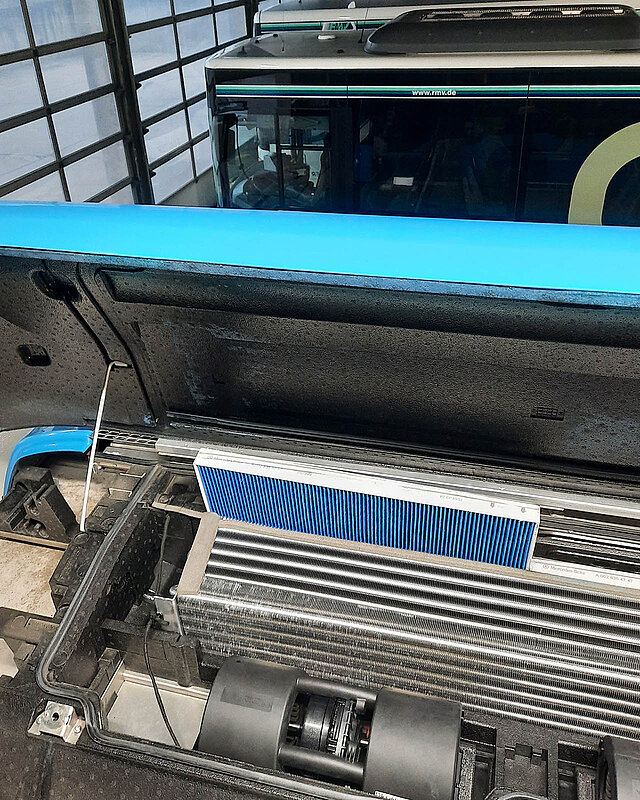Anti-viral.
Pro-health.
Long-term study puts micronAir cabin air filters for buses to the test
The mobility revolution is continuing to gain momentum. And it’s not only private transport going electric; public mass transport is also gaining in importance.
There is a high risk of infection wherever large numbers of people congregate in confined spaces. Coaches and buses are hotspots for transmitting bacteria and viruses, especially in the colder months. The COVID-19 pandemic is just one reason why passengers today have become more aware of potential health issues. It is therefore increasingly necessary for bus operators to integrate filtration solutions that provide effective protection against harmful substances and pathogens.
Long-distance tests reveal the truth
Since buses are often in continuous use, it is above all the long-term behavior of a cabin air filter that determines its qualities. The filtration performance and the pressure drop, which ultimately has a significant influence on the energy consumption of air-conditioning systems, need to remain relatively constant – ideally over many thousands of kilometers. For this reason, field tests are part of our customer-centric approach to provide the best possible solutions.
Our field test examined precisely this long-term behavior. The filter properties of two micronAir blue bus cabin air filter variants were observed over a period of 37 weeks. The bus was used on two intercity routes in southern Germany between June 2022 and February 2023. It mainly served small towns as well as one larger city. The proportion of natural dust sources and pollen was greater than the proportion of anthropogenic particle sources. Water and snow intrusion also occurred. The bus covered around 66,000 kilometers (41,000 miles) during the test with the properties of the filters being checked after half the time had elapsed.
The result: plenty of power and low pressure drop
The first test (after around 33,000 kilometers (20,500 miles)) revealed that the interim dust loading caused only a slight increase in pressure drop. With a separation efficiency of > 90 % ISO A2, they were clearly superior to the original filters. The clean-gas side showed no visible contamination, which also indicates effective air filtration. The state of the filter elements’ anti-viral properties after almost 9 months in operation and 66,000 kilometers was remarkable.
The results thus showed that the biofunctional layer was very effective even after three quarters of a year. The tested filter elements achieved an efficiency rate of 98%.

Anti-viral properties for effective protection against pathogens
“In ordinary filter elements, there is a risk that although viruses may initially be separated, they may later re-enter the ambient air and infect people,” he says. “But that doesn’t happen with micronAir blue.”
The biofunctional layer within the three-layer structure of the micronAir blue filter performs a key role: it permanently inactivates any viruses that are filtered. If the viruses were to be released back into the ambient air, they would no longer pose any risk of infection.
The finding that the biofunctional layer continues to perform well long beyond the recommended service life of six months, even under adverse conditions with rain and snow, boosts confidence in the filter performance of micronAir blue bus cabin air filters and the health protection they offer.


Three stages for safety
Even with a high air exchange rate, a steady supply of fresh air, and a minimal concentration of viral aerosols, high-performance air filtration is a must. Freudenberg Filtration Technologies recommends a progressive three-stage solution with perfectly matched elements. This solution includes a front box filter that pre-filters the outside air for the bus driver compartment. In the second stage, circulation filters separate large particles and aerosols in the bus cabin. The third filter stage in the roof unit cleans both the outside air and the recirculated air in the cabin.

Field testing beats lab testing
 automotive filtration insight
automotive filtration insight